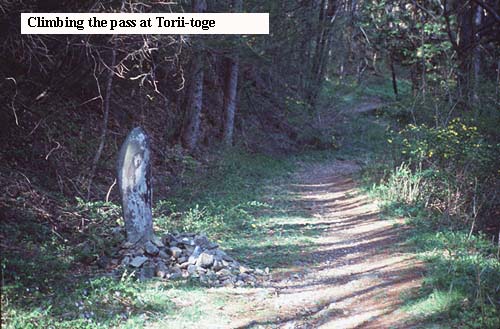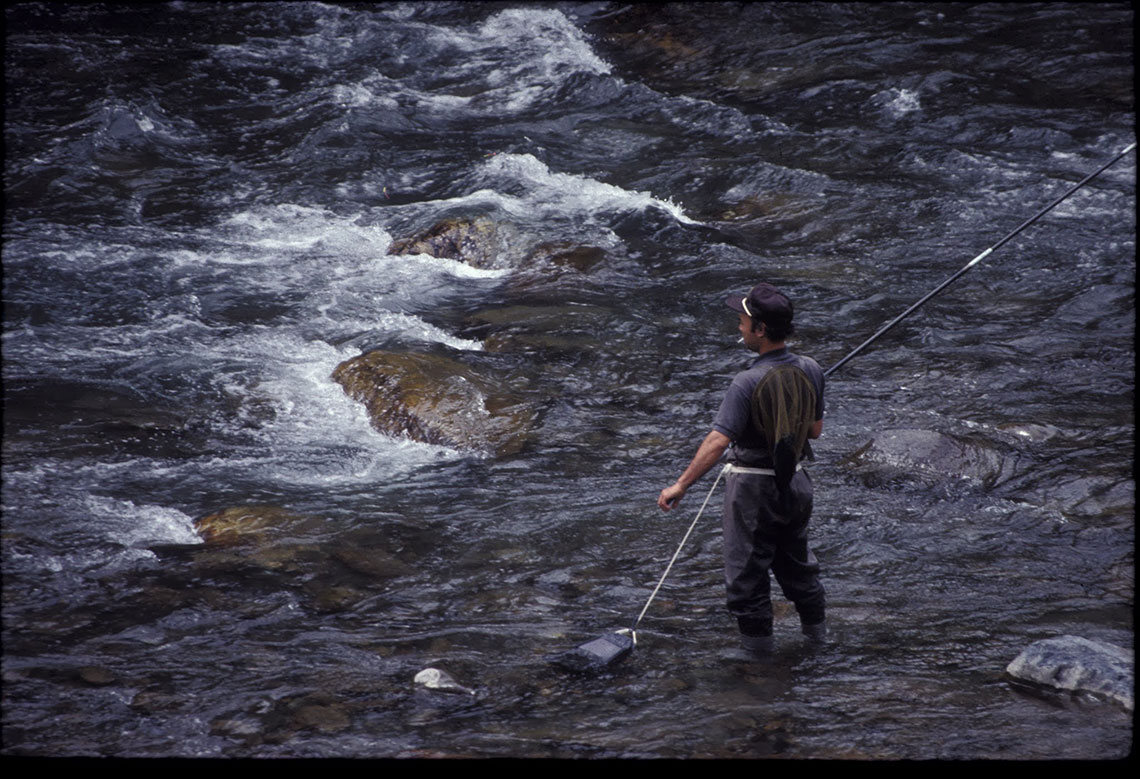Mienokoshi was one of the later post-towns established on the Nakasendo, in 1605. Today, it contains little of the atmosphere of an old post-town. Most of the buildings are modern or non-descript, although the route as it leaves the town retains much of its former charm.
After a half mile, the old highway disappears under the railway which cuts into the mountain. The modern highway is rejoined, but in turn goes through a recently-built tunnel. A previous road, built in the 1960s but now closed to traffic, turns off to the left and winds its way around the mountain. It lies in part directly on top of the old Nakasendo. The present highway seems an extravagance, but perhaps the local government had some extra money to spend and put in the new tunnel where there was no pressing need.
The Kiso river which is soon rejoined is popular with fishermen in this area. The Nakasendo follows the river for a while and eventually crosses it to rejoin the modern highway. Here, a footpath beside the highway is covered by a concrete superstructure which prevents harm from landslide and avalanche in this steep section of the valley.

Yabuhara, the next post-town, is reached after a little more than three miles. The town contains a number of antique shops dating from the late Edo period. A number of other old buildings remain intact, lending Yabuhara the atmosphere of that period.
Leaving Yabuhara, there is a sharp right turn through a masugata under the railway. The road now progresses through very quiet countryside, gradually ascending the valley side before changing into a footpath that begins the climb up Torii-toge. There is a section of ishidatami at the start of the climb up the pass, but most of it has deteriorated and disappeared. At the summit is a Shinto shrine. In the past, travelers paused here for the view of Mt. Ontake. This was the first view which pilgrims traveling from Edo had of the sacred mountain, so a torii was established here and lent its name to the pass.



